
A stock spool weighing just 6.16g makes the Fishband Clamber Hyper Micro HM-06 a very interesting proposition
Fishband Clamber Hyper Micro CR-HM06
I recently got lucky and managed to get hold of a pre-market sample (through the UK distributor) of the Fishband Clamber Hyper Micro CR-HM06. This is a really bold offering in the Bait Finesse System reel world; a CDM (Chinese Domestic Market) reel with a very light stock spool BFS reel. Plus, the Hyper Micro also sports an aluminium body at a low price for the industry, drag clicker and a bunch of other features that baitcasting reel fans often request.
To my eye, this is a truly lovely looking reel – so let’s dive in for some first impressions (there's a list of specs below the video...)
Specifications of the Fishband Clamber Hyper Micro CR-HM06
Quick Reference Vital Statistics for Reel Tuning Addicts: Fishband Clamber Hyper Micro CR-HM06

Stock spool weight - WITHOUT the bearing
CR-HM06 Bearings (external diameter x internal diameter x width in mm):
11 x 5 x 4 (spool spindle)
10 x 3 x 4 (brake plate)
These are the same dimensions as the bearings for the Fishband PW100 plus (Upgrade).
Major Components – First Impressions
When palming the reel, it feels good – very light, but also robust. As well as being a candidate for the lightest available stock spool in any BFS reel (including JDM offerings), the design of the spool (below) seems to be an improvement over the GH100 from Fishband:

The GH100 spool (left) with a short spindle - versus the CR-HM06 spool (right; notice the wider "lip" to the rims of the red spool)
The way that the extended lip at the edges of the spool (above) fits into the side plates seems like it should protect against some instances of line getting trapped round the brakes/inside the body. The engineering tolerances also seem to be pretty accurate (e.g. below):

Though things move incredibly fast in the BFS reel development realm (especially in the world of affordable CDM reels), the Clamber remains an appealing option. Its light spool is of a larger diameter than the current super-ultra-light spool offerings such as the Tsurinoya Genius and the Soloking Acura (both carbon-bodied reels). This gives it the 70cm per handle turn of line recovery for its 6.6:1 gear ratio.
An update of this article has been forced by a recent price drop - so I have to flag up that the reel is now available from B&U's Official Store on Aliexpress for a much lower price than its original launch (which was around £150). My affiliate link for this product in this article doesn't add to the price you pay - but it does earn me a modest (but important) commission if you choose to buy after following that link.
Here's where you can check out the pricing I found (FREE international shipping offered to certain destinations) :
Weighing the spool (with and without bearing) for the Fishband Clamber Hyper Micro CR-HM06
After calibrating the microbalance, I was able to get it to consistently measure at 6.16g without the bearing (shown in picture earlier in this article) and 7.71g with the bearing (pictured below).

Spool weight WITH the bearing
Is the Fishband Clamber Hyper Micro CR-HM06 a “JDM-killer”?
Does the CR-HM06 display as perfect tolerances as those on a top-end JDM reel? I’d say not quite. With that said, it is going to be difficult to stand up and declare that a “competing” reel of twice the price has tolerances that are more than twice as good… I like that this reel is forcing me to make those proportional judgements.

In the same way, creating a reel with these performance specifications – and yet keeping it affordable - means that Fishband will have to make some delicate choices on components and materials. In other words, by its very nature it HAS to make different choices than a reel with much higher manufacturing costs and retail pricing.
You can check for availability of left hand and right hand versions along with current pricing offers below:
My suspicion is that the aircraft grade aluminium must make it a significantly more expensive reel to produce than the GH100 or PW100. At the same time, opting for the simpler brake system (compared to the GH100) is probably going to create at least some cost-savings – if not in production, then perhaps in copyright battles!!

Plate for magnetic brakes (complete with my thumb-print!) on the Left-Hand wind option reel

Brake magnets bank (left) and spool with brake-plate (right)
So, if this reel marks the beginning of a new part of the market – where you can achieve a good proportion of the performance of JDM reels; but at a lower cost – I think it makes things very interesting...
I guess the bottom line verdict is that, if you can afford to run Alphas Air TW 20s, Aldebarans, Millionaires, Conquests etc. for all your reels, you will still do that – and be very happy about it.

Underside/Reel-foot view of Fishband Clamber Hyper Micro CR-HM06
At the same time, I don’t think we’ve ever seen a reel in the “more affordable” bracket that is aiming so boldly at extreme BFS performance with truly ultralight lures as the Fishband Clamber Hyper Micro CR-HM06.
Plastic vs. Metal
Inside the reel, there are a fair number of plastic components – though, I have to say, when turning the handle, pressing the thumb-bar or adjusting the spool tension – operations feel positive and accurate.

The brake side-plate (with release trigger mechanism to the left) and brake-plate bearing in its housing (centre)

The spool tension (metal, grooved knob above), in particular, actually feels better than the Alphas Air. Out of the box, at least, pressing the thumb-bar is not a “mushy” experience at all. I’ll need to report back after 12 months of use to see how well that holds up over time.

I also found the drag star, brakes and spool tension adjustment to be accurate and positive. To me, the drag adjustment and brakes adjustment (see 10-setting/40 division brake-dial above) both seem quite a lot more reassuring and consistent than the GH100 – at least on my examples of both reels.
The Stock Bearings Question
One VERY interesting observation is that the heavily-greased bearings seem to loosen up quickly. Even just a short amount of time spent spinning the spool and winding the crank – and not even putting it on a rod – made a big difference. I can see why manufacturers wouldn’t want to ship reels with dry, steel bearings. At the same time, I suppose there could be problems with light oil leaking away during transit?
Fishband are reported to have sourced specific bearings to achieve the best performance for the CR-HM06, so I'm fascinated to see how they perform in the field of battle!

Stock bearing - with quite a lot of grease applied
I was keen to bottom out just exactly how well the reel performs with absolutely zero modifications. Of course, there has been an incredibly high bar set in that respect by the Alphas Air TW 20; especially with Daiwa’s K.T.F. (Karil Tuned Factory) collaboration on that reel - and now with the updated crop of reels with low diameter, ultralight spools such as the Dark Wolf Ultra, Black Knight II, Soloking Acura and Tsurinoya Genius/Elf (that you can find reviewed on Fishing Discoveries too).
A shock result for me was finding that acetone-cleaned (stock) bearings actually perform about as well as replacement (RoRo BFS) bearings. I still don't really know why the upgraded bearings (with smaller and lighter ball-bearings inside) don't provide the noticeable jump in performance I've found with all the other reels mentioned in this article. However, swapping out the bearings would save you from cleaning and lubricating the stock bearings (as an aside, I prefer cast lube from Deuthlon for that job).

Here's what my investigations into the Hyper Micro performance also found:
Casting with the Fishband Clamber Hyper Micro CR-HM06
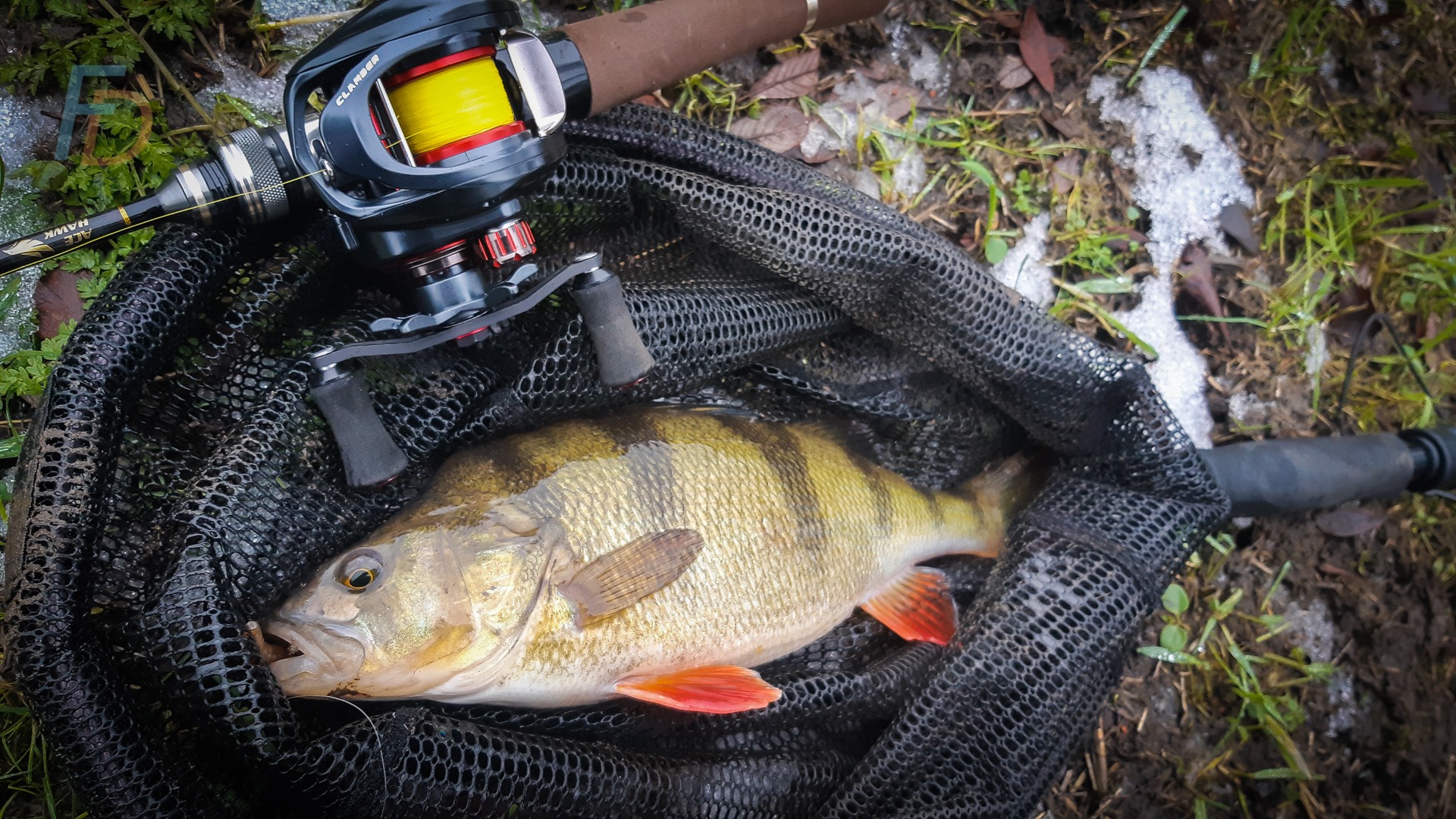
"Out of the box" Cast Performance Testing: Overall Distance
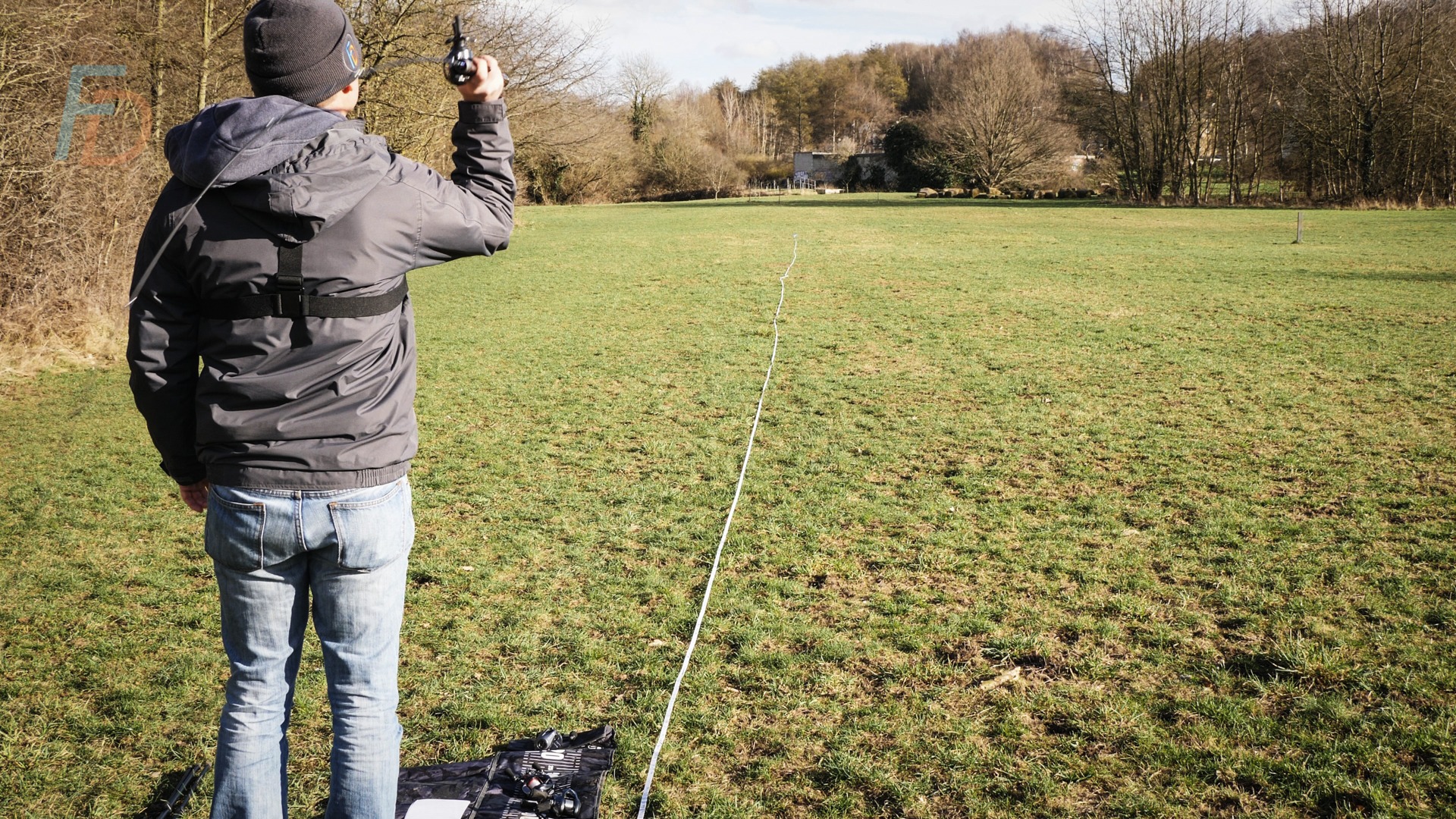
Well - here's the part where I share with you how this reel performs when you lift it right out of the box, put 50-m of basic 4lb Trilene fluorocarbon on the spool, strap it on a rod and just CAST...
You can see a REALLY detailed explanation on how I did the tests - and how I statistically analysed a 5-way Cast Battle Here.
The Basics are that I used three different lure weights (standardised for aerodymamics by using cheb weights) as follows:
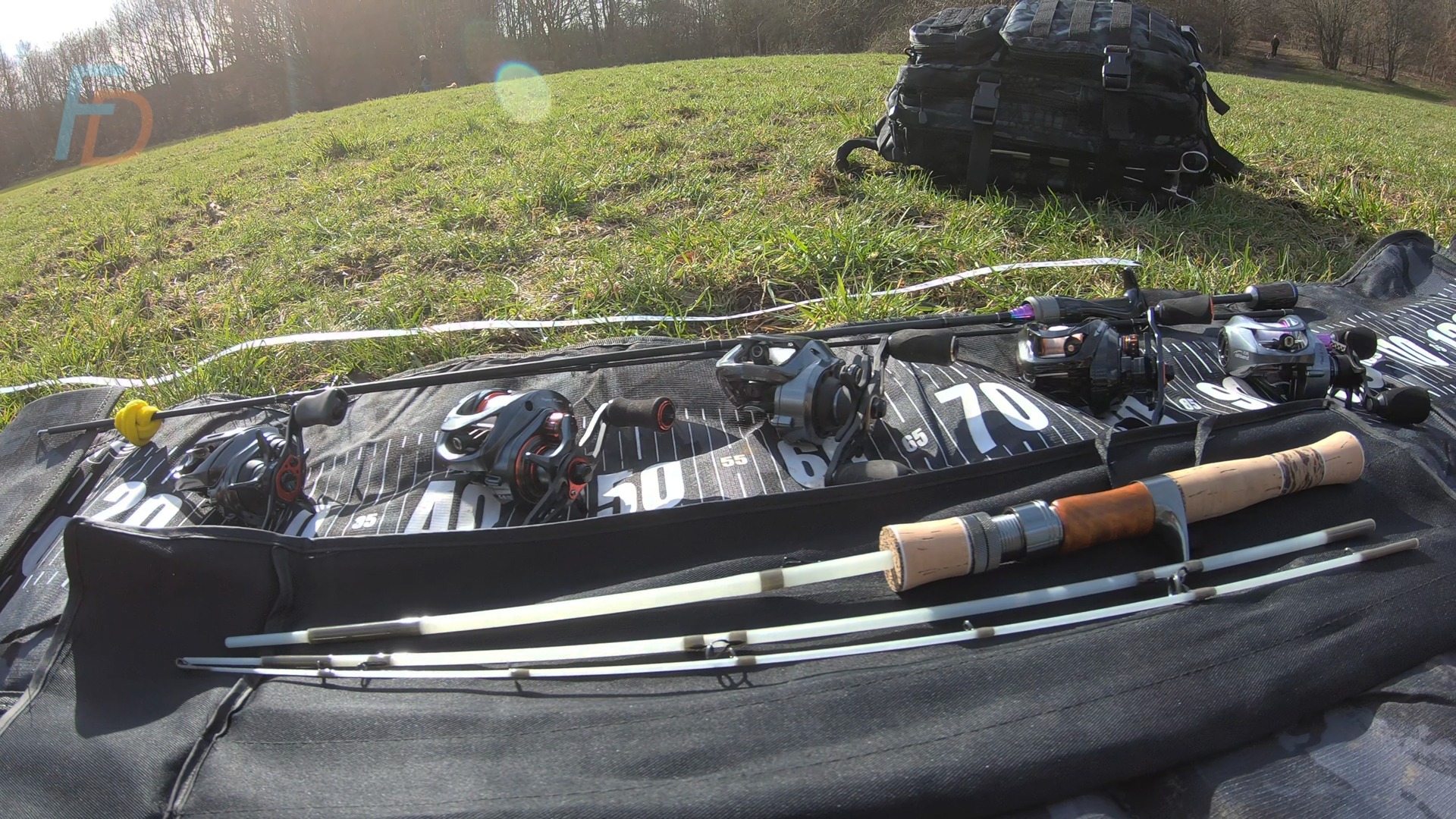
"Out of the box" Cast Performance Testing: BFS FLIP CASTING (↓↓ demo video below ↓↓)
I also did a separate Flip-cast test - using just the 3-g Lure Weight
I felt that it was important to also assess the casting performance for more BFS-specific applications (and not only throwing for overall distance). These casts often rely very heavily on the blank flexing and straightening - rather than any casting or throwing movement of the angler's arms.
6-g Distance Comparisons
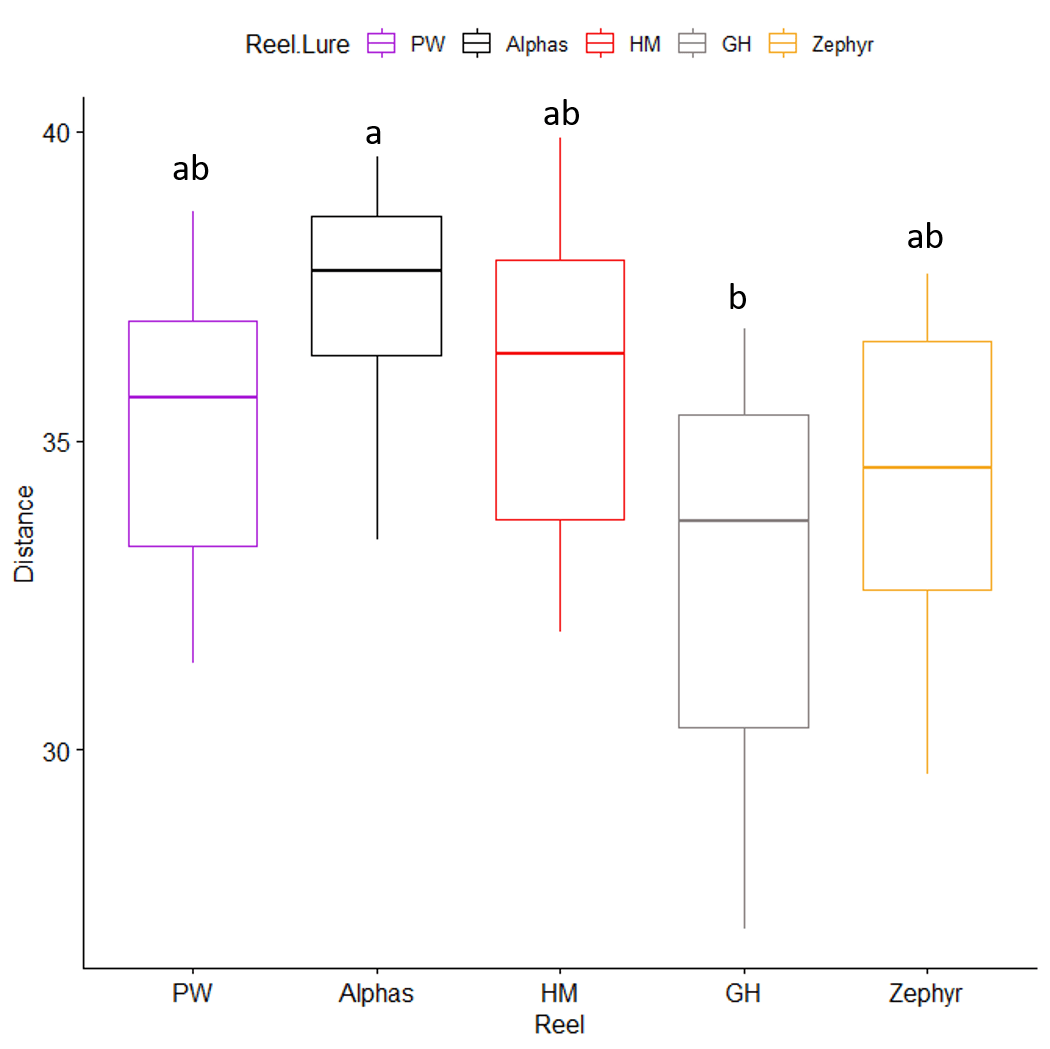
3-g Distance Comparisons

2-g Distance Comparisons

Flip Casting Comparisons
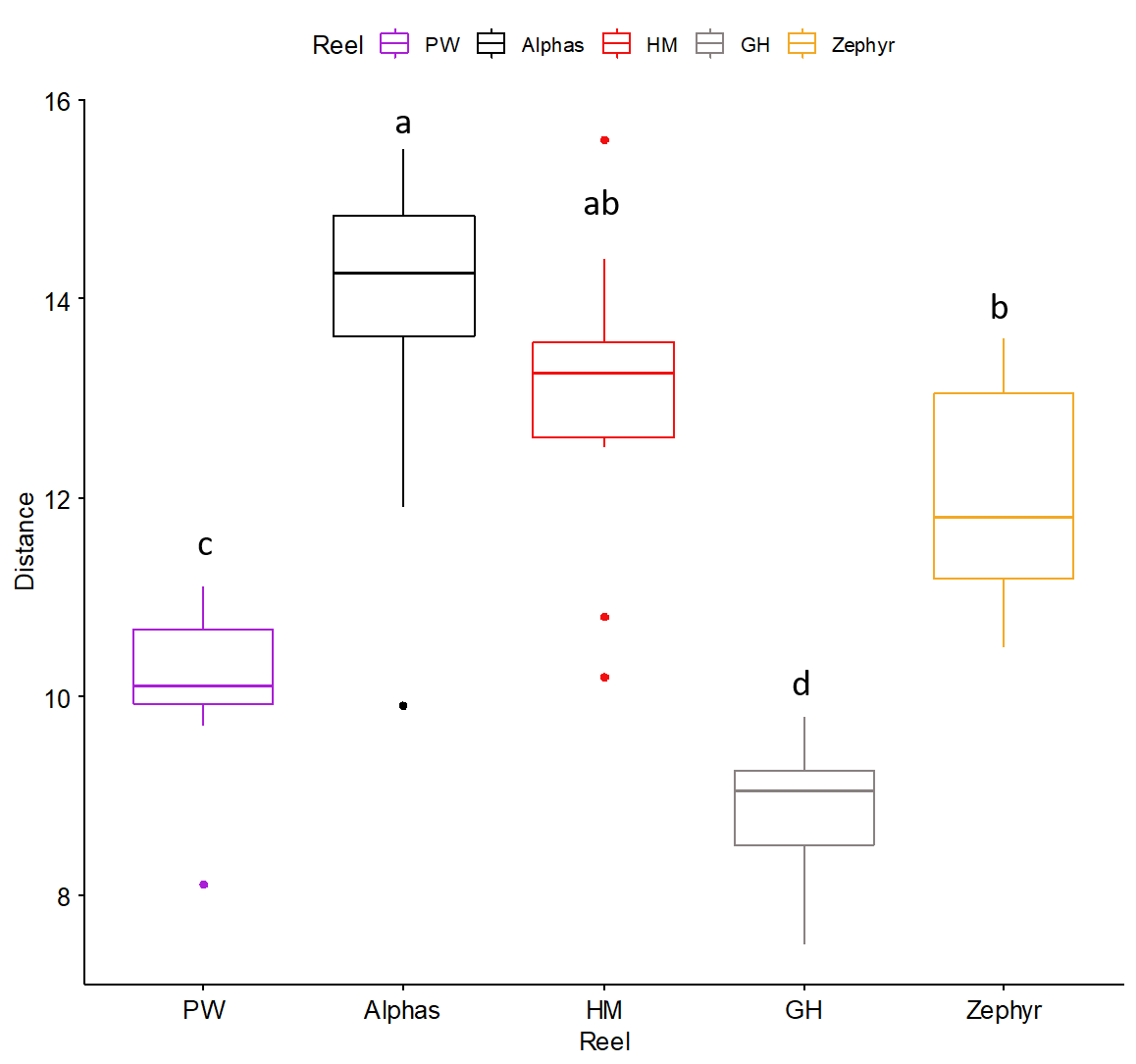
Cast Results With Cleaned and lubricated Bearings Cast and Rorolure BFS micro bearings
My original plan was to repeat the above (2-day) operation of cast measurements (1 day) followed by statistical analysis, interpretation and plotting of the figures. However, the industry moves so fast that the original five models were quickly joined by multiple new contenders in the affordable BFS reel category.
So, instead of performing such a lengthy and detailed analysis, something I can do which may be of value to you is to just run through my overall experiences and findings with this reel. That way, I don't need to also run through the same suite of tests with four other reels (i.e. do four times the work - on the same day to keep conditions comparable) - plus saving on the statistical analysis time too.
As I've mentioned in brief already, I was surprised that there wasn't really any difference in cast distance between the specialised roro BFS bearings with lures in the 1.7g to 6g range. In fact, the surprising thing I found was that I probably prefer to clean and lubricate the original stock bearings. You might ask "why would that be?".
Well:
- For whatever mystical science and engineering reasons, installing the BFS bearings seems to make the Hyper Micro just slightly more sensitive to differences in lure weight. What I mean is, the reel feels like it becomes a little less forgiving when you switch lures and may need small tweaks to the brakes to maintain distance while still avoiding back lashes. This is particularly true the lighter you go with your lure.
- The stock bearings, once cleaned, gave a small improvement in distance and, with the tiniest drop of lubrication, remained more forgiving - at least of my personal casting style.
- So, for that reason (even though I love their products and I'm happy to be part of their affiliate programme) I wouldn't push you towards the Roro BFS bearings option - unless you REALLY didn't fancy cleaning and lubricating the bearings yourself.
- With all that said, following a short breaking-in period, everything works pretty well out of the box - especially for lures of 2g and above.
Overall, the Hyper Micro is an affordable aluminium-bodied reel which performs well for a range of BFS applications. It doesn't quite match the Daiwa Alphas Air TW 20 - whereas some of the newest crop of carbon-bodied reels with smaller diameter spools may actually out-cast the "factory version" Alphas.
If it's an appealing option for you, feel free to check out the availability and pricing here:
PLUS, let me know what you think about the reel so far in the comments section below:
Paul



Hi Paul, I’m awaiting delivery of my Hyper Micro and was wondering if a bearing upgrade is a worthwhile investment off the bat or if a clean and lube would suffice?
Hi Ronnie – this is a timely question as I’ve just updated the article so that it includes my own experiences with upgraded versus cleaned/lubed stock bearings.
As you’ll see in the article, for my own style of casting, I’d say that clean and lube and sticking with the stock bearings is definitely the way to go.
I know that some folks would prefer to just get ceramic hybrids and run them “dry” to save a little bit of effort on cleaning and a small cost of buying a good lube; but if you end up dunking your reel (or using it normally for a period of time) you’ll probably need to do that maintenance anyway.
So, yeah, for me stock bearings all the way with this reel (which is unusual for me to say).
Paul
Great review!
I also got my Clumber two days ago and I don’t like the performance of stock bearings with baits 3g or less.
I have a slightly tuned alfas air and a dark wolf ultra, there are no such problems with them.
Did your reel work properly from the first fishing or did it take some time?
What should I do? Wait a couple of fishing trips until the excess grease comes out of the bearings or flush them and fill them with liquid oil like Revo Rocket?
Or maybe microcast bearings need to be installed?
Great review!
I also got my Clumber two days ago and I don’t like the performance of stock bearings with baits 3g or less.
I’ve got a slightly tuned Alphas air TW and a Dark Wolf Ultra, there are no such problems with them.
What should I do? Wait a couple of fishing trips until the excess grease comes out of the bearings or flush them and fill them with liquid oil like Revo Rocket?
Or maybe microcast bearings need to be installed?
Did your reel work properly from the first fishing or did it take some time?
Thanks)
Hi Sergey – for me I could cast 3g and down to just under 2g pretty much right away out of the box. I did have maybe two or three sessions casting things of around 3g and by the time I tried a 1.7g zoner minnow it was casting OK. However, it does need to be said that the Dark Wolf Ultra and Alphas Air are both (potentially) higher performance reels. The 1st Generation Dark Wolf (with dynamic brakes) and magnet upgrade is possibly the best stock-spool reel for casting 1g lures that I’ve tried. I am told that the 2nd generation static version (without brake mods) also casts well.
For your reel, I would recommend flushing out the grease from the bearings with acetone and then adding just a tiny drop of my favourite bearing oil (Deuthlon cast lube). If you like, you can use my affiliate link to get a starter pack of cast lube plus the gear grease and “sliding parts” grease which all help to keep water and dirt out of your reel and bearings: https://deuthlon.com?sca_ref=1008444.s4fyGo31gj
You get 25% off for your first order (and I get a small percentage commission) so hopefully a good win:win arrangement.
You can just buy the cast lube on its own if you like via your nearest deuthlon supplier.
Paul
[…] Fishband Clamber Hyper Micro CR-HM06: BFS Reel with Ultra-light Spool […]
Were results better with Roro bearings? You never did update this
[…] Fishband Clamber Hyper Micro CR-HM06: BFS Reel with Ultra-light Spool […]
This is my first baitcaster set-up coming from a fly rod (for those super brushy streams) and maybe I made too big of a leap, but on a 4lb mono line and a 3g spoon on the Clamber with a super flexy glass rod, I’ve been struggling to get consistent blowout-free casts without really clamping down on the spool tension control knob and brakes set at about 8. Any advice would be most appreciated.
Hmm, there should not really be a need to use the spool tension to control backlashes with that kind of lure weight.
My thoughts are that perhaps the glass rod you have could suffer from too much “wobble” after you make your casting stroke. One of the more affordable glass rods I have tried was very bad in that respect. The tip was too thick, heavy and stiff, while the rod flexed in the middle the weight of the inflexible tip made it rebound almost uncontrollably. However, with care it was possible to cast – but certainly not something I’d ask someone to do early on in their learning curve.
My second thought is that perhaps you might need a more positive “backswing and stop” to flex/load the rod before casting forwards – and/or you could be letting go of the lure too late (and consequently having to throw it harder). That leads to the line suddenly “jagging” against a static spool which simultaneously slows down the lure at the exact moment the spool starts whizzing round at what seems like 3000 rpm.
So, a smooth backswing (but stop the rod soon enough to make it bend) and then a very small forward cast – letting your thumb off while the rod is still a little bit bent (if the rod is already straight that is probably too late to release your thumb).
Hope this might help!
Paul
Why Test it with roro bearings ? Very rare Anglers change original bearings into Roro bearings
Simply to see if the ceramic hybrid micro-bearings (rated for lighter lures) made a difference…
As a spoiler alert – I believe the Roro bearings did actually make a difference; so it was a worthwhile experiment.
Very best wishes
Paul
Thank you for informative review, This is a reel I’ve been seeking for very long time, unfortunately Amazon or Aliexpress doesn’t sell it. My friend in HongKong told me it’s ranked the King of Budget BFS reel. I finally bought it at https://www.dankung.com/product/fishband-clamber-hyper-micro-bfs-reel-661_3344
Shipping is ok, 8 day being here Texas, not so fast, but product is very good.
Great stuff Tom – I’m glad you got hold of one and that you’re enjoying it.
I hope you’re already getting some memorable captures on ultralight lures.
Paul
Hi, I just read your article, so professional you are.
we will stock the fishband clamber hm06 reel and sell it. Do you have any suggestion?
https://fishingdiscoveries.com/fishband-clamber-hyper-micro-cr-hm06/
Can’t wait for the other tests (cleaned and lubed, and the ones with the roro bearings). Keep up the great work! (I just loved the use of p. values, it makes it so much easier to judge any reel (real) differences).
Thanks Peter – I”m glad you enjoyed my approach on this one. I should have believed my maths teachers in school when they said it would come in handy one day!
Paul
50 metri
50 metri di filo … Quasi esattamente 40 m di lancio (con 6 g)
🙂
[…] Fishband Clamber Hyper Micro CR-HM06: BFS Reel with Ultra-light Spool […]
[…] Fishband Clamber Hyper Micro CR-HM06: BFS Reel with Ultra-light Spool […]
[…] Fishband Clamber Hyper Micro CR-HM06: BFS Reel with Ultra-light Spool […]
[…] Fishband Clamber Hyper Micro CR-HM06: BFS Reel with Ultra-light Spool […]
[…] Fishband Clamber Hyper Micro CR-HM06: BFS Reel with Ultra-light Spool […]
Thanks for the review..any idea of a release date and approximate price?
Hi Chris – I’m just in the process of finalising a small commission deal with the UK distributor. The reel should be available within a few days – Retail Price looking to be somewhere in the £120 to £130 ballpark…
I’ll confirm and add to the article when it’s all finalised.
Cheers,
Paul
Chris – the reel is now available to ship worldwide from Fishband Products UK, based in Nottinghamshire. Current Retail Price is £114.99 plus shipping. Link Button is now in the article or direct link is:
https://www.fishbandproducts.co.uk/product/fishband-clamber-hyper-micro-cr-hm06-bfs/
Beware the birds nest
Ha Ha – yes fear the back-lash.
To be fair the brakes on this reel are really strong – and there is an unexpected bonus compared to fixed spool/spinning reels; you tend to get far less line-twist on a baitcasting design. That’s probably due to the way that, when you wind at the same time as the drag is paying out – a fixed spool reel puts twists in the line. Whereas a baitcaster the handle just turns and the spool slips – so there’s no winding and twisting action that you’d get with a bail arm versus a slipping clutch.
Swings and roundabouts…
Paul
Great review. Will be very interested to see how it performs on the bank
Thank you Adrian – super kind of you to leave that feedback. I’ve shot some initial footage with the reel in the last few days – and (weather allowing); I hope to be out on the water with it in the coming week…
Keeping everything crossed that it lives up to its potential…
Paul
Hi Paul, looks a very interesting reel. Intrigued to see how the mods work out and if the braking system can control the spool as you push it further. Curious that the system on the GH100 wasn’t carried over……..
Seems as in most things that you can get 80-90% of the performance of a top end reel, gaining that last fraction is where the big bucks are spent.
Yeah, I guess that the FTB style brakes are both added weight and expense? I’m very curious as to how this goes on stream (quite impatient actually!!!).
‘The proof of the pudding is in the eating’…. there are many products that should work but don’t, and many that shouldn’t work but do!!!
Hear you on the impatience front, hasn’t stopped raining here completely for several weeks and rivers are pretty full.
The mooring circle I had that trout from earlier in the year had turned into a 150ft washing machine!!!!
Quick heads up Glenn, I hope to get out on the water very soon with the CR HM06… Watch this space for further info 🙂
Paul
Awesome reporting. Now I need my hands on one to try it out
I’ll try to keep this page up to date with details of suppliers etc. Mike,
Paul
Hi Mike, Fishband Products UK, based in Nottinghamshire are now selling the reel. Current Retail Price is £114.99 plus shipping. Link Button is now in the article or direct link is:
https://www.fishbandproducts.co.uk/product/fishband-clamber-hyper-micro-cr-hm06-bfs/
Link didn’t work for me. At that sort of price it’s in competition with Shimanos one can buy s/h from Japan on Ebay, in excellent condition – better engineered than Chinese, I’d always say, and many of us are now avoiding buying Chinese stuff too…
Yes, there will always be a choice to make (and Japanese engineering definitely tends to have an advantage – obviously at a slightly higher price point – even when it comes to the affordable Shimanos). Judging by the feedback from the BFS testing community, the Clamber throws lighter lures with greater ease than the Curado out of the box (so you’d need to factor in the price of an after-market ultra light spool for the Curado to match the Clamber in that respect).
With that said, as long as the magnet upgrades are done, the Dark Wolf Ultra outperforms the Clamber when it comes to throwing super light stuff… and yet there is still definitely a strong need for the Japanese options too – since the gearing is still smoother and likely to be more robust over the long term. The fact those choices exist in the marketplace is very good news for anglers.
It’s amazing to me that we live in a time when we have so much choice at so many pricepoints – the barrier to fantastic, enjoyable days on the water has pretty much been eradicated no matter what your budget.
As regards “avoiding buying Chinese” – I think that is an extremely complex issue. I’ve had some bad experiences with direct dealings with Chinese tenkara rod manufacturers – and the absence of intellectual property laws is certainly a curve-ball to deal with. By the same token, I’ve also dealt with companies from countries such as Singapore, Malaysia, Japan and Hong Kong (which is technically a “Special Administrative Region” of China. but in many ways operates as its own country) and had very good experiences. Those experiences say to me it makes sense to treat individual Companies on their own merits – regardless of where they are in the world.
Trying to judge them on the basis of their governments doesn’t seem to be a reliable tool just now (after all, one half of America right now would be furious if you assumed they were like their current president…and the other half would be equally enraged if you assumed they were anything like their last).
With that said, there will probably always be a positive effect of the extremely high standards set by default within Japanese engineering – that seems to be so embedded in the cultural DNA that it is probably completely independent of any governmental influence.
Paul